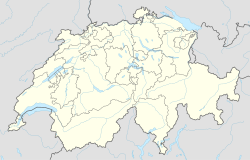| Appenzell Castle | |
|---|---|
Schloss von Appenzell | |
| Appenzell | |
 | |
| Site information | |
| Code | CH-AI |
| Location | |
| Coordinates | 47°19′48″N9°24′35″E / 47.329947°N 9.409615°E |
| Site history | |
| Built | 1563 |
| Materials | stone |
Appenzell Castle (German : Schloss von Appenzell) is a castle in the Appenzell District of the canton of Appenzell Innerrhoden in Switzerland. It is one of a few 16th century stone buildings in Appenzell. [1] It is part of the Swiss heritage site of national significance. [2]
